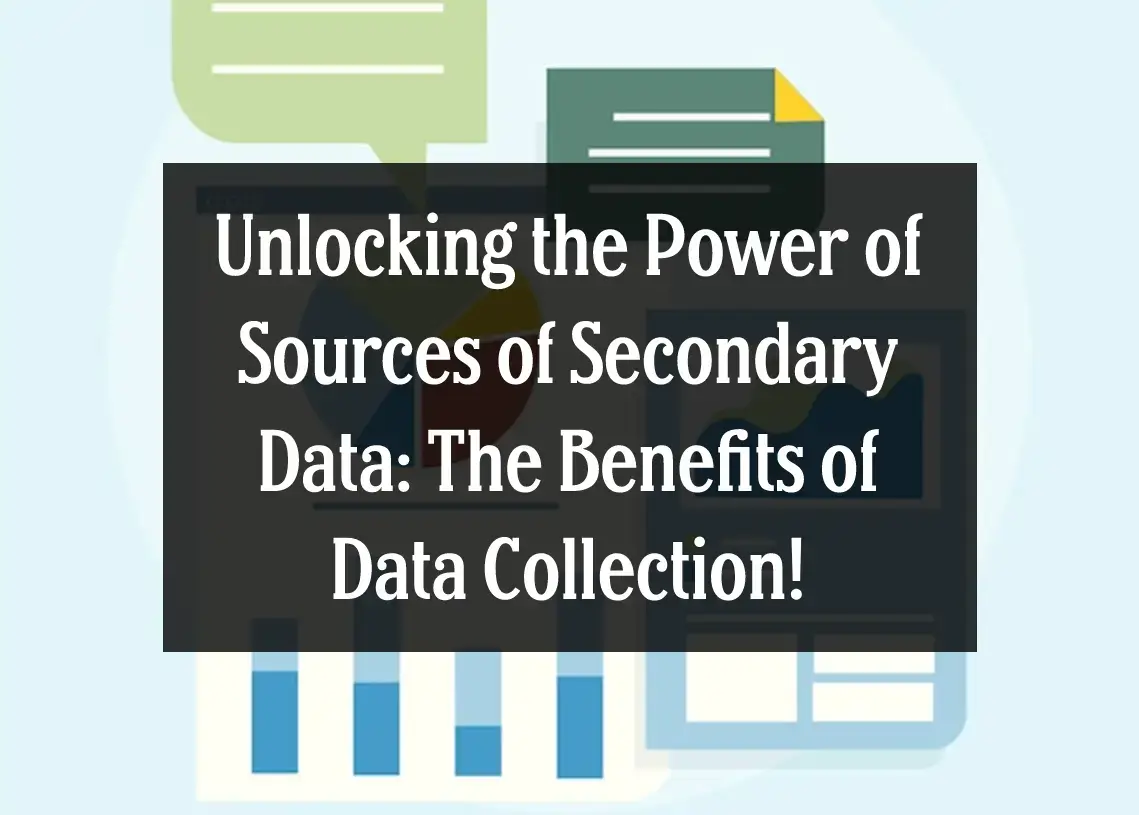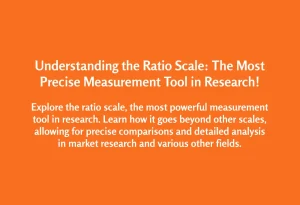Data is everywhere and it is the key to unlocking insights that can help businesses make informed decisions. While primary data is collected using surveys or interviews, secondary data is data that has already been collected and can be used to gain further insights into a particular subject or industry. In this blog article, I will explore the sources of secondary data, the benefits of using it, the different types of secondary data, where to find it, how to gather it, how to analyze it, tips for working with it, the challenges of working with it, and examples of secondary data sources.
What is Secondary Data?
Secondary data is information that has been collected by someone else for a purpose other than your own. It is data that has already been gathered and analyzed for a different purpose and is then repurposed for another use. This can include data from surveys, interviews, focus groups, market research, and more.
Secondary data can provide valuable insights into a particular subject or industry, as it is already organized and analyzed to some extent. It can also be used to supplement primary data, helping to provide a more complete picture of a particular topic.
Benefits of Using Secondary Data
There are many benefits to using secondary data for research. One of the biggest benefits is that it is often more cost-effective than collecting primary data. This is because the data has already been collected and organized, so there is no need to invest in the resources necessary to collect it.
Additionally, secondary data can provide a more comprehensive picture of a particular topic or industry, as it is often collected from multiple sources and different types of data. This can be particularly helpful if you need to gain a better understanding of how a particular market or industry works.
Secondary data can also be used to supplement primary data. This can be especially useful if you are collecting primary data that is limited in scope. By combining the two types of data, you can gain a more comprehensive understanding of the topic or industry you are researching.
Types of Secondary Data
There are many different types of secondary data that can be used for research. These include census data, government data, industry reports, market research, customer reviews, and more. Census data is data collected by the government that can be used to gain insights into population trends and the characteristics of certain populations.
Government data is information collected by the government that can be used to gain insights into economic issues, public health, and other topics. Industry reports are reports produced by industry organizations that provide data and insights into the industry.
Market research is data collected by market research companies that can be used to gain insights into consumer behavior and preferences [Marketing Research: Tools and Techniques 3rd Edition. by Nigel Bradley (Author)]. And customer reviews are reviews left by customers that can be used to gain insights into customer experience.
1. Government on Your Side: Census Data and Beyond
Government data is a treasure trove of information readily available to businesses of all sizes. Understanding how to access and utilize this data can be a game-changer for informed decision-making. Let’s explore two key resources within this category:
1. Census Data: A Demographic Powerhouse
- Census data, collected periodically by governments, provides a detailed snapshot of a population’s characteristics. This includes demographics like age, income, education level, and household composition. By analyzing census data, businesses can gain insights into their target market. Are you looking to expand to a new location? Census data can [Census Data Analysis and Decision Making System: A Digital Approach for Census. by Atul Shrivastava (Author), Amit Agarwal (Author)] reveal factors like population density, median age, and income levels, helping you identify promising markets. Additionally, you can use this data to understand your competitor landscape – for example, by analyzing the demographics in areas where your competitors have a strong presence.
2. Government Publications: A Wealth of Industry-Specific Insights
Government websites often go overlooked as a source of valuable data. Don’t underestimate their power! They offer a wealth of information beyond just census data. Look for publications from relevant government agencies or departments. These publications can provide insights into:
- Economic Indicators: Track key economic indicators like GDP growth, inflation rates, and unemployment figures. This information can help you assess the overall health of the economy and make informed investment decisions.
- Industry Trends: Government agencies often publish reports on specific industries, highlighting trends, regulations, and growth projections. This knowledge can be crucial for staying ahead of the curve in your competitive landscape.
- Regulations and Compliance: Staying compliant with government regulations is essential for any business. Utilize government websites to access the latest regulations and ensure your business operates within legal boundaries.
Remember, government data is a free and readily available resource. By leveraging this data effectively, you can gain valuable insights that empower you to make informed business decisions and achieve your strategic goals.
2. Industry Experts: Insights from Industry Reports
Industry reports are a powerful tool for gleaning expert-driven insights into your specific market sector. Authored by industry associations, research firms, and consultancies, these reports offer a unique perspective on your industry landscape, compiled by individuals with deep knowledge and experience.
Here’s what makes industry reports so valuable:
- Curated Data and Analysis: Industry reports go beyond simply presenting raw data. Experts analyze the data, identify trends, and provide valuable insights and interpretations. This saves you time and resources by offering a pre-digested understanding of your industry’s current state and future direction.
- Focus on Your Niche: Industry reports are often specific to a particular industry or niche. This allows you to access data and insights directly relevant to your business operations. You can gain a deeper understanding of your target audience, competitor strategies, market size and growth projections, and even emerging technologies that could disrupt the landscape.
- Credible Source of Information: Industry reports are compiled by reputable organizations with a vested interest in the health of the industry. This ensures the data and analysis are reliable and trustworthy, providing you with a solid foundation for making strategic decisions.
By incorporating insights from industry reports into your research strategy, you can gain a competitive edge. These reports can inform your business planning, product development, marketing strategies, and overall decision-making process.
3. Understanding Your Audience: Market Research Data
In today’s competitive business landscape, understanding your target audience is critical for success. Market research data plays a pivotal role in achieving this understanding by providing insights into consumer behavior, preferences, and attitudes.
Here’s how market research data empowers you to connect with your audience:
- Unveiling Consumer Needs and Wants: Market research delves into the motivations and desires of your target audience. By analyzing this data, you can identify their pain points, unmet needs, and what drives their purchasing decisions. This knowledge allows you to tailor your products and services to better address their specific requirements.
- Understanding Consumer Behavior: Market research data sheds light on how consumers interact with products and services within your industry. You can learn about their buying habits, preferred channels, and decision-making processes. This empowers you to develop targeted marketing campaigns that resonate with your audience and drive conversions.
- Identifying Market Trends: Market research reports often analyze emerging trends within your industry. This foresight allows you to stay ahead of the curve by adapting your offerings and strategies to cater to evolving consumer preferences and market shifts.
By leveraging market research data, you gain a deeper understanding of the “who” and “why” behind your target audience. This empowers you to create buyer personas, personalize your marketing efforts, and ultimately build stronger customer relationships that drive business growth.
4. The Voice of the Customer: Unveiling Customer Reviews
Customer reviews are a treasure trove of unfiltered opinions and experiences, offering a unique perspective on your customer journey. While not always structured data, analyzing online reviews and social media mentions can be a powerful tool for understanding customer experience.
Here’s how customer reviews provide valuable insights:
- Identifying Customer Satisfaction Levels: Reviews offer a direct window into how customers perceive your product or service. Positive reviews highlight strengths, while negative reviews reveal areas for improvement. By analyzing review sentiment, you can gauge overall customer satisfaction and identify potential pain points that need addressing.
- Uncovering Product Shortcomings: Customer reviews can pinpoint specific issues with your product or service. They can reveal usability problems, functionality gaps, or even unmet customer needs. By listening to the “voice of the customer,” you can prioritize product development efforts and ensure your offerings continue to meet customer expectations.
- Informing Product Development: Customer reviews can be a source of inspiration for product innovation. By identifying recurring themes and suggestions within reviews, you can gain valuable insights into features customers desire or improvements they would value. This feedback can inform product roadmaps and ensure your development efforts are aligned with customer needs.
It’s important to remember that customer reviews [Mining Economics and Strategy Updated in 2003 ed. Edition. by Ian C. Runge (Author)] can be both positive and negative. However, by embracing all forms of feedback, you can gain a holistic understanding of your customer experience and use those insights to continuously improve your offerings and build stronger customer relationships.
Where to Find Secondary Data
Secondary data can be found from a variety of sources. Government websites, such as the US Census Bureau, are a great source of data. Additionally, industry organizations often produce reports that provide data and insights into the industry.
Market research companies, such as Nielsen, are another source of data. These companies often collect data from surveys and other sources that can be used to gain insights into consumer behavior and preferences. Databases, such as the ProQuest database, are also a great source of data. This database provides access to a wide range of datasets, including census data, government data, industry reports, and more.
How to Gather Secondary Data
Once you have identified the sources of secondary data that you want to use, you can begin gathering the data. This can be done in a variety of ways, depending on the type of data you are looking for. For example, if you are looking for census data, you can use the US Census Bureau’s website to access the data.
If you are looking for industry reports, you can search for them on the websites of industry organizations. And if you are looking for market research, you can search for it on the websites of market research companies. Once you have identified the data you want to use, you can download it and begin analyzing it.
How to Analyze Secondary Data
Once you have gathered the data, you can begin to analyze it. This can be done in a variety of ways, depending on the type of data you are working with. For example, if you are working with census data, you can use descriptive statistics to analyze the data. If you are working with industry reports, you can use market research techniques to analyze the data. And if you are working with customer reviews, you can use sentiment analysis to analyze the data.
Tips for Working with Secondary Data
When working with secondary data, there are a few tips to keep in mind. First, be sure to use the most up-to-date data available. This is especially important when working with government data or industry reports, as the data can become outdated quickly. Additionally, be sure to use data that is reliable and accurate. This can help ensure that the data you are using is providing the most accurate insights possible. Finally, be sure to use a variety of sources when collecting data. This can help provide a more comprehensive picture of the topic or industry you are researching.
1. Ensuring Accuracy: Freshness is Key
The world of data moves fast, and so should your research! When working with secondary data, prioritizing the use of the most up-to-date information available is crucial. This is especially true for certain types of secondary data, such as:
- Government Data: Economic indicators, industry trends, and population statistics can fluctuate rapidly. Ensure you’re basing your decisions on the latest government publications and reports to avoid skewed insights.
- Market Research: Consumer preferences, market sizes, and competitor strategies can evolve quickly. Utilize recently published market research reports to gain the most current picture of your industry landscape.
- Industry Reports: Industry associations and research firms regularly update their reports to reflect the latest developments. Opt for the most recent editions to ensure your understanding of the industry is fresh and relevant.
By prioritizing data freshness, you can be confident that the insights gleaned from your research are based on the most accurate and current information available. This empowers you to make informed business decisions that are strategically sound and aligned with market realities.
2. Building Trust: Verifying Data Reliability
In today’s data-driven world, trust is paramount. When you base your business decisions on secondary data, the reliability of that data becomes critical. Here’s why prioritizing data credibility is essential:
- Confidence in Your Insights: By using reliable data, you can be confident that the conclusions you draw from your research are accurate and reflect reality. This strengthens the foundation of your decision-making process and minimizes the risk of basing strategies on flawed information.
- Enhanced Credibility: When presenting your findings to stakeholders or investors, data reliability is key. By demonstrating that your conclusions are based on trustworthy sources, you bolster your credibility and inspire confidence in your recommendations.
- Mitigating Risk: Faulty data can lead you down a dangerous path. Using unreliable information can result in flawed business decisions, missed opportunities, and even financial losses. Prioritizing data credibility helps mitigate risk and positions you for success.
There are a few ways to assess the reliability of secondary data sources:
- Source Reputation: Look for data compiled by reputable organizations with a proven track record and expertise in the field. Government agencies, established research firms, and industry associations are often reliable sources.
- Data Collection Methodology: Understanding how the data was collected can shed light on its credibility. Look for information on the sample size, data collection methods, and any potential biases that might have been introduced.
- Transparency and Documentation: Reliable data sources are often transparent about their data collection and analysis processes. Look for documentation that details the methodology and provides clear definitions of the data points included.
By taking these steps to verify data reliability, you can build trust in your research and ensure that your business decisions are grounded in sound information.
3. Painting a Complete Picture: Triangulation Through Multiple Sources
The beauty of secondary data lies in its vastness. To gain a truly comprehensive understanding of your research topic or industry, don’t limit yourself to a single source. Employ a technique known as “triangulation” by incorporating data from a variety of sources. Here’s how this benefits your research:
Richer Context:
- By looking at data from different perspectives, you gain a richer and more nuanced understanding of your subject. Government data offers a broad view, while industry reports provide a more specific industry lens. Customer reviews add a qualitative layer, revealing real-world experiences.
Identifying Inconsistencies:
- Inconsistencies between data sets can be revealing. If you find conflicting information, it can prompt further investigation and potentially uncover new areas of exploration within your research.
Enhanced Credibility:
- By drawing on a variety of credible sources, you strengthen the overall credibility of your research findings. This triangulation approach demonstrates a well-rounded investigation and inspires confidence in your conclusions.
Remember, the key is to choose data sources that complement each other and offer diverse perspectives on your topic. For instance, researching a new market might involve:
- Analyzing government census data to understand demographics.
- Consulting industry reports for market size and growth projections.
- Reviewing customer reviews to glean insights into competitor strengths and weaknesses.
By leveraging this multifaceted approach, you paint a complete picture and gain a deeper understanding of the landscape you’re navigating. This empowers you to make informed business decisions with greater confidence.
Challenges of Working with Secondary Data
Although there are many benefits to using secondary data, there are also some challenges. One of the biggest challenges is that it can be difficult to find reliable and accurate data. This can be especially true for data collected from online sources, as there is no way to verify the accuracy of the data. Additionally, the data may be outdated or incomplete. This can make it difficult to gain an accurate understanding of a particular topic or industry. Finally, it can be difficult to analyze the data, as it may be organized in a way that is not conducive to analysis.
Examples of Secondary Data Sources
There are a variety of sources of secondary data that can be used for research. Government websites, such as the US Census Bureau, are a great source of data. Additionally, industry organizations often produce reports that provide data and insights into the industry. Market research companies, such as Nielsen, are another source of data.
These companies often collect data from surveys and other sources that can be used to gain insights into consumer behavior and preferences. Databases, such as the ProQuest database, are also a great source of data. This database provides access to a wide range of datasets, including census data, government data, industry reports, and more.
Secondary Data also may be collected from a wide variety of sources. Broadly, we can classify these sources into two types. Such as Internal Sources & External Sources.
Internal sources:
Internal Sources of data are those data that are originated in the organization or generated by the organization. Internally, secondary data can be collected from an organization’s own records and database.
For Example, An Accounting information system (AIS) of an organization can provide timely & accurate decision-support information. Some internal sources of secondary data are described below:
Sales Data:
The sales records of an organization can be a vast source of secondary data. Every organization keeps records regarding Its operation e.g. sales orders received & delivered recording the cost of goods sold, preparing sales invoices, return of goods, preparing sales reports, etc.
A wide range of information can be collected from the above sources. For example, from sales orders and invoices, the following information may be obtained:
- Sales by geographical region.
- Sales by type of customer.
- Prices & Discounts.
- Average Sales by sales personnel.
- Sales personnel’s commission.
The above information is useful to identify an organization’s most profitable product & customer & this information is widely used specially incase of marketing research.
Financial Data:
An organization’s financial data can be obtained mainly from its financial statements. The financial statements comprise income statement, balance sheet cash flow statement, notes to the financial statement & owner’s equity statement.
The above financial statements provide information regarding the financial performance & financial position of an organization that
Financial data are widely used in research especially in accounting research e.t. capital market research.
Transport Data:
A company that keeps records regarding transport operation is efficient in determining the most profitable route or cost-effective route. Good data on transport operation enables the firm to conduct trade-off analysis & enables the firm to conduct trade-off analysis & enables the firm to have the best financial outcome.
Storage Data:
Storage data can also be a great source of secondary data that can be used by the researcher. Information about strong cost, stock handling cost, stock out rare, etc. information one uses to analyze the efficiency and effectiveness of the operation of an organization.
There is another internal source of collection secondary data e.g. an origination background information of published documents, employee records, etc.
External Sources:
External data are those data that are generated by an entity other than the researcher’s organization. Most of the secondary data are collected by the researcher from external sources. Some external sources of secondary data are described below:
Govt. Statistics:
Govt. statistics is one of the largest sources of secondary data. In every country, govt. conduct research to develop
- Population statistics.
- Agriculture statistics.
- Import/Export statistics.
- Social survey e.g. family expenditure survey.
- Production statistics etc.
Trade associations:
Trade associations can also be a large source of collecting secondary data.
Commercial service:
Published market research repeats and other publications are available from a wide range of organizations that charge for the information. Typically marking people are interested in consumer info and media statistics obtained from large-scale consumers or formers.
The commercial organization provides funds, for the collection of data which are
Media sources:
Information on a broad range of subjects is available from broadcast and print media. CNN Financial News and Business Week are valuable sources for information on the economy and many industries.
Media frequently commission research studies about various aspects of Americans’ lives, such as financial affairs, and make reports of survey findings available to potential advertisers free of charge.
Data about the readers of magazines and the audiences for broadcast media typically are profiled in media kits and advertisements.
Data such as these are plentiful because the media like to show that their vehicles are viewed or heard by advertiser’s target markets.
National & International Institutes:
There are different national & International institutes worldwide from where the researcher can collect secondary data. Some examples of such institutes are:
- Bank economic reviews.
- University research reports.
- Published journals and Articles.
- World Bank
- International Monetary fund (IMF)
- FIAD
- UNDP
- ITC
- FAD
- ILO etc.
Conclusion
Secondary data can be a powerful tool for gaining insights into a particular topic or industry. By understanding the sources of secondary data, the benefits of using it, the different types of secondary data, where to find it, how to gather it, how to analyze it, tips for working with it, and the challenges of working with it, you can unlock the power of secondary data and unlock the benefits of data collection. So, what are you waiting for? Start exploring the sources of secondary data and unlock the power of data today!




